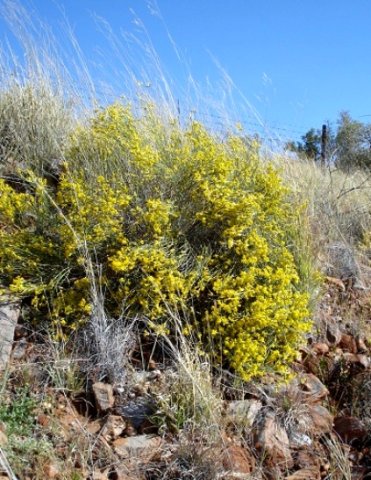Lasiosiphon polycephalus and some grass

Author: Ivan Lätti
Photographer: Judd Kirkel Welwitch
There is grass in the western arid parts of South Africa, land mostly not qualifying as real grassland. Other plant species dominate here, giving the vegetation its character. Grazing is available, albeit of a low stock carrying capacity. Some of it comes from palatable shrublets adapted to low rainfall habitat.
Grass and Lasiosiphon polycephalus with yellow flowers can be observed here in a road reserve near Postmasburg, giving a glimpse of the resilience in nature, as well as the way plants spread beyond normal expectations and distribution delineations.
L. polycephalus finds testing climates manageable, partly due to its (almost) leafless aspect that provides little opportunity for moisture to escape. Animals adapted to land where this plant grows, usually avoid browsing it during its flowering season, which is fortunate for that is when the plant is poisonous to them (Vahrmeijer, 1981; iSpot; Shearing and Van Heerden, 2008).

